Best Books on Algorithmic Trading

MORITZ PUTZHAMMER
16 October 2022 • 13 min read
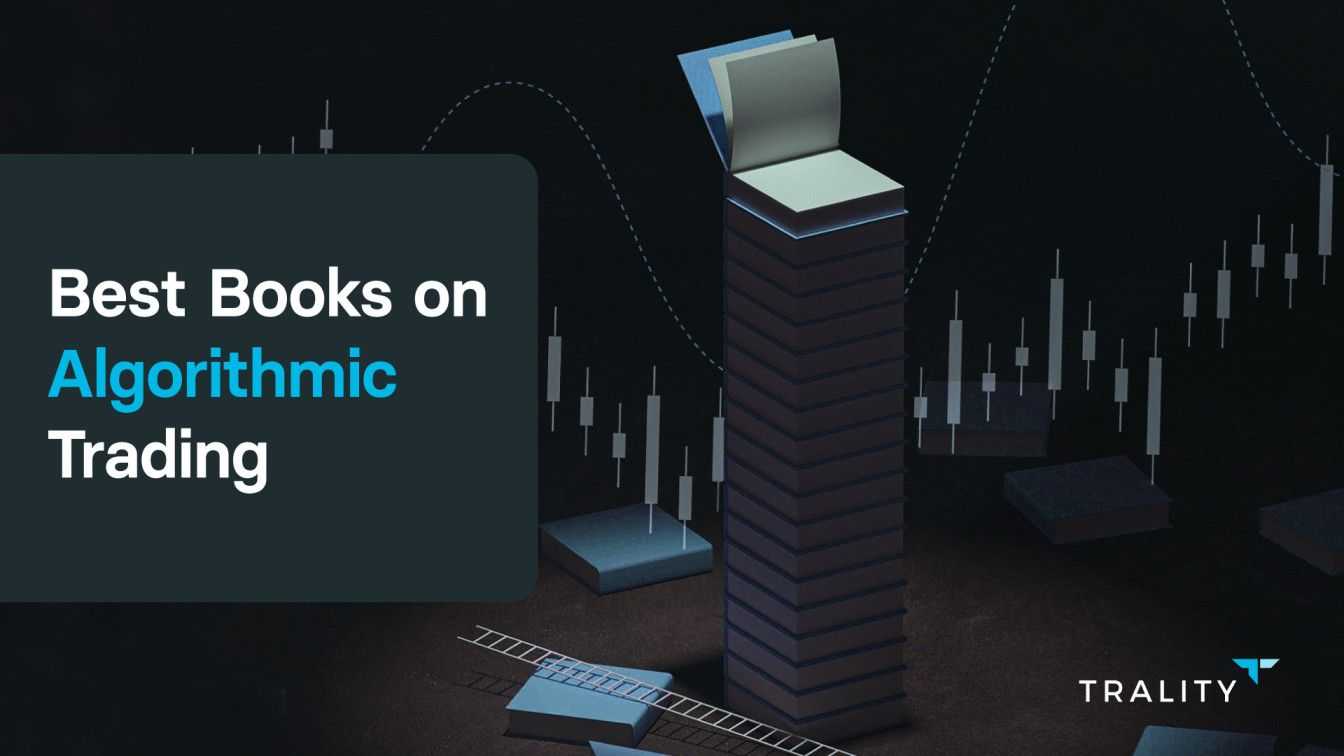
Table of contents
By now we all know how effective and profitable algorithmic trading can be for investors. In stock markets across the world, algorithmic trading alone accounts for approximately 70-80% of trading volume. You read that correctly.
Yet the vast majority of people trading crypto are doing it manually, resulting in missed or poorly-timed trades. Even worse, manually trading is based on feeling and gut instinct rather than data and analysis, resulting in costly mistakes and missed opportunities.
However, despite its many benefits, algorithmic trading might seem a bit complex at first. Thankfully, there’s no shortage of excellent books to get you started if you’re a beginner interested in learning about automated trading strategies. And for the more advanced algo traders among us, there is always something new to learn.
With this in mind, we’ve put together a handy list of the best books on algorithmic trading, covering users of all experience levels, whether you’re a beginner in need of a basic introduction or a seasoned veteran looking to add a few additional advanced tools and techniques to your trading arsenal. (Eagle-eyed readers will notice that a fair number have been published by Wiley, which continues to crush it when it comes to books on algorithmic trading.)
The Man Who Solved the Market. How Jim Simons Launched the Quant Revolution by Gregory Zuckerman (Penguin Random House)
When customer reviews on Amazon about a book on a quant trader begin by quoting phrases in Latin, you're probably onto something interesting. In his New York Times bestseller The Man Who Solved the Market, award-winning Wall Street Journal writer Gregory Zuckerman explores "the unbelievable story of a secretive mathematician who pioneered the era of the algorithm—and made $23 billion doing it."
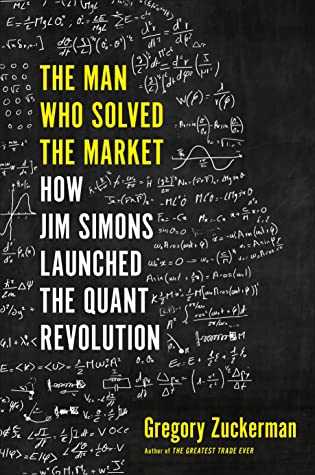
An extraordinary mathematician, former code-breaker for the United States government, and founder of the world's most successful financial firm (Renaissance Technologies), Simmons has an unsurpassed record of investment success, having trumped the likes of Warren Buffet and George Soros, among many others. With his data-driven approach to algorithmic investing, he has realized annual returns of 39% over three decades (!).
If you're interested at all in algorithmic investing (and we're assuming that you are since you're reading this article), then this is an excellent diversion from the usual books on the subject. Or as that Amazon reviewer put it: Omnia probate, quod bonum est tenete (Google it).
Machine Learning for Algorithmic Trading: Predictive models to extract signals from market and alternative data for systematic trading strategies with Python by Stefan Jansen (Packt Publishing)
Although the book's title might be a mouthful, which is fairly common for books on algorithmic trading (and crypto in general), Stefan Jansen's Machine Learning for Algorithmic Trading "introduces end-to-end machine learning for the trading workflow, from the idea and feature engineering to model optimization, strategy design, and backtesting [...] by using examples ranging from linear models and tree-based ensembles to deep-learning techniques from cutting edge research."
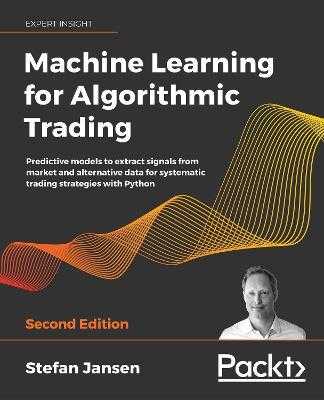
In this updated, second edition, readers learn about working with various types of data (market, fundamental, alternative) in order to create tradeable signals. In addition, the book shows how readers can predict returns for both US and international assets, and even includes a handy appendix with 100+ alpha factor examples. If you're interested in getting into the nitty gritty of machine learning and algo trading, then this will be of interest to you.
One of the underlying principles of algo trading is trying to time the market using data and algorithms, and Jansen's book provides a wide range of useful techniques and models, ones which have something of value to learners of all levels with an interest in machine learning.
An Introduction to Algorithmic Trading: Basic to Advanced Strategies by Edward Leshik & Jane Cralle (Wiley)
Something that manages to cover both basic and advanced algorithmic trading strategies belongs on everyone’s bookshelf (or hard drive). It’s also a rare feat when authors can speak to both ends of the trading spectrum, but Edward Leshik and Jane Cralle have done just that with An Introduction to Algorithmic Trading. Sure, it was published over a decade ago, but the content is solid, even evergreen.
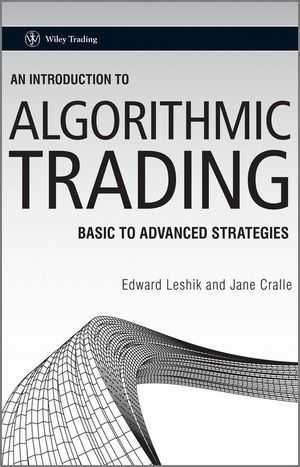
Beginners will love the step-by-step guide to algorithmic trading in which the authors explain this often complex topic in plain English, using clear, concrete examples to illustrate or expand their points. Contextual information is also provided as Leshik and Cralle gradually progress to more advanced algorithmic trading concepts and practices.
From a brief historical overview of algo trading and grappling with nomenclature, statistics, volatility, and technical analysis indicators to actual examples of working algorithms and a number of helpful appendices, this book is an excellent starting point for foundational info or as merely a refresher for those already in the know.
The Ultimate Algorithmic Trading System Toolbox by George Pruitt (Wiley)
Algorithmic trading is all about using the right tools at the right time for the right purpose, and The Ultimate Algorithmic Trading System Toolbox offers a balanced combination of explanation and tutorials. Pruitt gradually inducts novice algo traders into key concepts and ideas, providing insights into the key tools of the trade and how to use them to your advantage.
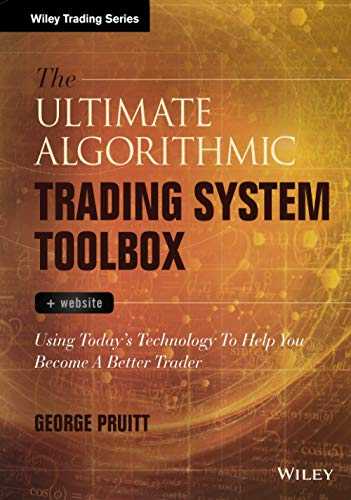
While some of the companion websites and software provided can seem a bit dated to readers in 2022, this book does a number of things very well. For example, you’ll learn how to exploit trading technology despite not having a computer science degree; how to evaluate different trading systems' strengths and weaknesses; how to stop repeating the same trading mistakes over and over again; and how to develop a complete trading solution using source code and libraries provided by Pruitt.
Is it the ultimate algorithmic trading system toolbox? Probably not. But there’s a great deal of useful information, making it a solid entry on our list.
Machine Trading: Deploying Computer Algorithms to Conquer the Markets by Ernest P. Chan (Wiley)
I don’t know about you, but I’d be happy with just making peace with the crypto market these days. But if you have the urge to conquer, then Machine Trading: Deploying Computer Algorithms to Conquer Markets might interest you. Chan, an experienced trader with significant institutional expertise, covers a range of topics, beginning with the basics and quickly transitioning into factor models, time-series analysis, artificial intelligence techniques, options strategies, intraday trading and market microstructure, and, finally, Bitcoin.
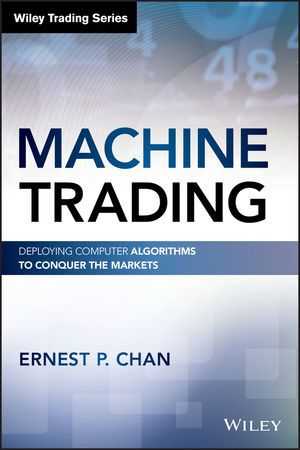
Since it was published in 2017, the section on Bitcoin will be less relevant but the book’s strengths lie in its clear description of the process of developing your own trading strategy using a variety of tools. You’ll also learn about adopting new strategies for a variety of instruments and gaining a perspective on the human side of trading, which is so often overlooked when dealing with automated trading strategies.
And with its final chapter entitled “Algorithmic Trading Is Good for Body and Soul,” how can you possibly go wrong with this one?
Algorithmic Trading Methods: Applications Using Advanced Statistics, Optimization, and Machine Learning Techniques by Robert Kissell (Elsevier)
As the title suggests, Kissell’s book is targeted to advanced algorithmic traders who are already conversant with techniques for advanced statistics, optimization, and machine learning. It’s a follow-up volume to his excellent The Science of Algorithmic Trading and Portfolio Management (2013), which covers a great deal of ground for algorithmic trading beginners. Start here and then consider dipping your toes into Algorithmic Trading Methods.
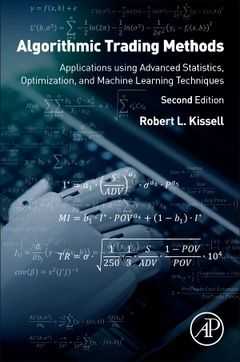
Included in this second edition are updated chapters on algorithmic trading, advanced trading analytics, regression analysis, optimization, and advanced statistical methods as well as pre-trade and post-trade analysis, liquidation cost and risk analysis, and compliance and regulatory reporting requirements. You’ll benefit from Kissell’s coverage of new investment techniques, model validation, quality and assurance testing, limit order modeling, and smart order routing analysis.
With twenty-one chapters across almost 600 pages, this is a comprehensive book written by an academic for advanced algo traders. It also provides an exceptional wealth of information and insight.
Advances in Financial Machine Learning by Marcos Lopez de Prado (Wiley)
Advances in Financial Machine Learning addresses some of the most practical aspects of how automated tools can be used in financial markets. Artificial Intelligence (AI) and Machine Learning (ML) operate with large amounts of data, and de Prado discusses how to best use these data sets when creating trading tools.
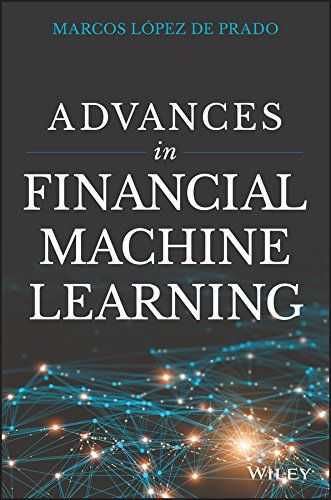
The application of existing ML tools to finance is bound to be fraught with difficulties. Many of these advanced big data tools were created to understand specific biotic systems, or with purely academic purposes in mind. As a result, many automated tools fail to create profits when deployed to the markets, even if they appear to succeed in a backtested environment.
Crucially, de Prado avoids these pitfalls by accomplishing the following:
- Showing how big data can be best used by AI/ML platforms
- Processing data with ML for optimal results
- Avoiding false positives that can be created when AI/ML is applied to datasets incorrectly
- Addressing the best ways to use supercomputers in financial algorithms
Anyone interested in making the most of ML in algorithmic trading can easily gain from Prado's work. Bridging the gap between established ML methods and financial applications is still a new area of research, and the author of this book has made a meaningful contribution to the field.
Python for Finance: Mastering Data-Driven Finance by Dr. Yves Hilpisch (O’Reilly)
The programming language Python is the hottest thing in the financial software development space, and Dr. Yves Hilpisch is widely recognized in the industry as being both an expert in Python and how to use it and other programming environments in the financial markets.
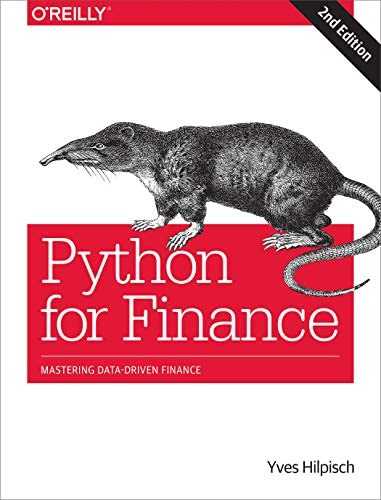
In Python for Finance: Mastering Data-Driven Finance, Hilpisch dives into how to best develop Python programming skills that can be put to immediate use in the algorithmic trading sector. It must be said that the book does require the reader to have some background in programming, as it focuses on how to use the language in real trading environments. Hilpisch has also written and worked on many other books on effective programming for financial markets, including Python for Finance, Derivatives Analytics with Python as well as Listed Volatility and Variance Derivatives, making him something of an established authority.
Python for Finance: Mastering Data-Driven Finance is a great resource for anyone that wants to learn more about how to use Python in algorithmic trading development as well as for coders who need more insight into how their skills may be useful in the financial markets.
Building Winning Algorithmic Trading Systems by Kevin J. Davey (Wiley)
Bottom line: an algorithmic trading system has to make money when it hits the markets. In Building Algorithmic Trading Systems: A Trader's Journey From Data Mining to Monte Carlo Simulation to Live Training, Kevin Davey shows readers how to take top-tier algorithmic systems and make sure they live up to a trader's needs in reality. Davey had a background in aerospace engineering and quality assurance before he jumped into the markets.
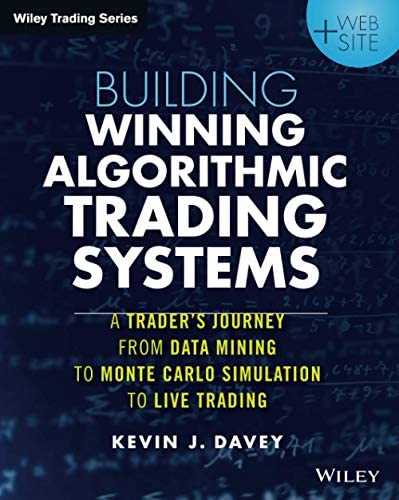
The years of trading success that Davey brings to bear are valuable from a technical perspective, but he’s also a perfect example of how his many trading failures can lead to learning and big future profits. Davey’s book includes a tremendous amount of background information on algorithmic trading as well as a proprietary Monte Carlo simulation created by the author himself, which readers can use to test their algorithms.
For anyone that wants a practical, no-nonsense book to guide them through creating, testing, and finally deploying trading algorithms into the financial markets, Building Algorithmic Trading Systems: A Trader's Journey From Data Mining to Monte Carlo Simulation to Live Training deserves their attention.
Algorithmic Trading: A Practitioner's Guide by Jeffrey M Bacidore (TBG Press)
In Algorithmic Trading: A Practitioner's Guide, Dr. Bacidore offers his readers a deep dive into some of the most important aspects of using algorithms in the markets. The book includes a detailed analysis of a range of tools, including, volume-weighted average price (VWAP), percent of volume (POV), single-order algorithms, multi-order algorithms, pairs trading and portfolio trading solutions, and time-weighted average price (TWAP), among many other things.
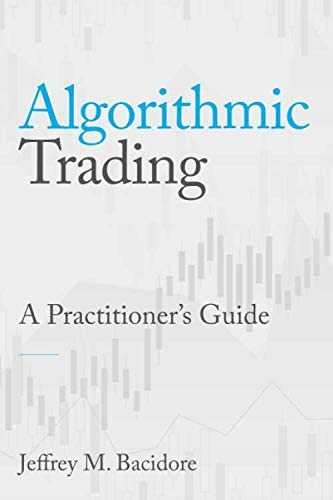
Bacidore has worked on algorithmic trading programs for companies like Goldman Sachs and he was also Head of Research at the New York Stock Exchange (NYSE) as well as Head of Research and Consulting in Credit Suisse's Advanced Execution Services (AES) group. His expertise has allowed him to create a guide to algorithmic trading that will apply to established markets, but also new markets such as crypto.
The nuanced and deep world of algorithmic trading is where Bacidore's talents are strongest, and this book is being used by both professional traders and for university-level instruction. Anyone that wants to leverage Bacidore's lifetime of learning and experience may want to dig a little deeper into what may be one of the best books on algorithmic trading on the market.
Learn Algorithmic Trading by Sebastien Donadio and Sourav Ghosh (Packt Publishing)
Anyone who wants to get into trading will surely benefit from Learn Algorithmic Trading by Sebastien Donadio and Sourav Ghosh. If you are new to the world of trading or don't understand the fundamentals of algorithmic trading, this book is a great place to start. Donadio and Ghosh take a bottom-up approach to algorithmic trading and prime the reader applying their insights into algo trading to the market.
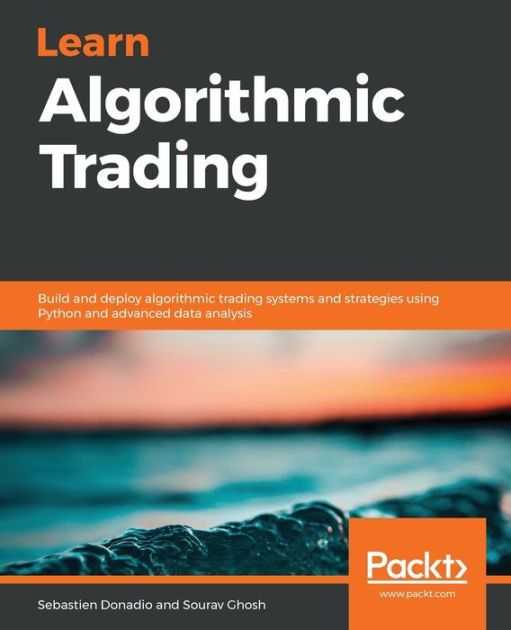
The book begins with an overview of algorithmic trading and how it can help traders make money in the financial markets. While many AI/ML books take a wider view of the technology, Learn Algorithmic Trading is 100% focused on how algorithms can be used to create profitable trading strategies. It continues by exploring how technical analysis is used in trading. Basic ML tools are introduced and there are examples of how ML can be used to predict price moments. Donadio and Ghosh then dive into how trading strategies can be built into an algorithm and used for real-world trading.
Opening the door to algorithmic trading can seem daunting, especially if a person plans to create their own tools. With Learn Algorithmic Trading many of the most challenging topics are handled in an easy-to-understand way, with the authors taking the reader from theory into practical development and, finally, the actual market trading.
A Guide to Creating a Successful Algorithmic Trading Strategy by Perry J. Kaufman (Wiley)
For anyone that wants to create their own algorithmic trading system, A Guide to Creating a Successful Algorithmic Trading Strategy by Perry J. Kaufman is a must-own book. In this work, Kaufman lays out all of the ingredients that allow a developer to find the right trading tools and build them into a trading strategy that makes consistent profits.
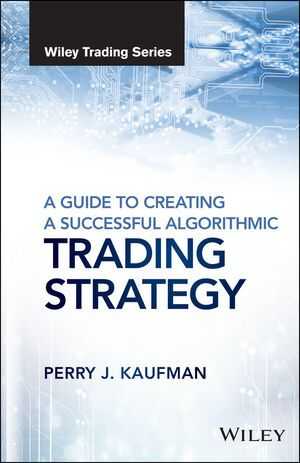
In addition to creating solid algorithmic trading strategies, readers will also gain insight into the origins of algorithmic trading and how it evolved into the toolset that many professional traders use today. There is a lot that goes into creating and testing a successful trading algorithm, and in this book, Kaufman helps his readers to build new strategies from the ground up. He also addresses traders who want to buy existing algorithmic trading tools, but don't want to waste money on unprofitable options that will be unlikely to yield profits in the actual market.
While many algorithmic trading books focus on the technical side of creating the code to operate trading strategies, A Guide to Creating a Successful Algorithmic Trading Strategy begins with the basics, which is especially useful for those who aren’t coders. But it also has something to say to people who have the coding skills to create trading algorithms but need more information about how to use trading strategies to create profits.
Algorithmic Trading with Trality: Putting Theory into Practice
Well, there you have it. A list of the best algorithmic trading books, with pages and pages of invaluable information on all aspects of trading with automated strategies.
If you’re looking to put some of these ideas into practice, then check out Trality’s innovative, market-beating algorithmic trading tools such as our Python Code Editor. With in-browser editing with intelligent auto-complete as well as in-browser debugging as well as a full range of technical analysis indicators and a growing number of libraries, including NumPy, the Code Editor provides maximum flexibility for customizing bots based on a variety of market conditions and a variety of short- and long-term trading goals.
For those with little-to-no coding knowledge, our Rule Builder is a simple yet powerful rule-based bot creation editor, one that lets traders build and automate algorithmic trading bots by dragging and dropping technical indicators based on boolean logic. With over 100 technical indicators from which to choose as well as a variety of predefined strategies, traders can customize their bots with ease based on their own individual needs.
Final Words
As you progress along your journey of creating profitable algorithmic trading strategies, always remember the golden rules of trading: never risk more than you can afford to lose and always continue to do your own research.
Given the pace with which developments occur and accrue in the space, it's imperative to stay informed, which is why anyone with an interest in algorithmic trading should have a well-stocked bookshelf (or bookcase), and the above-referenced books are an excellent place to start for a range or learners and traders.
And if you have any recommendations for the best books on algorithmic trading that didn’t make our list, then get in touch via social media or our Discord channel! Or, if you’re an author or publisher with a forthcoming book on algorithmic trading, let us know!





